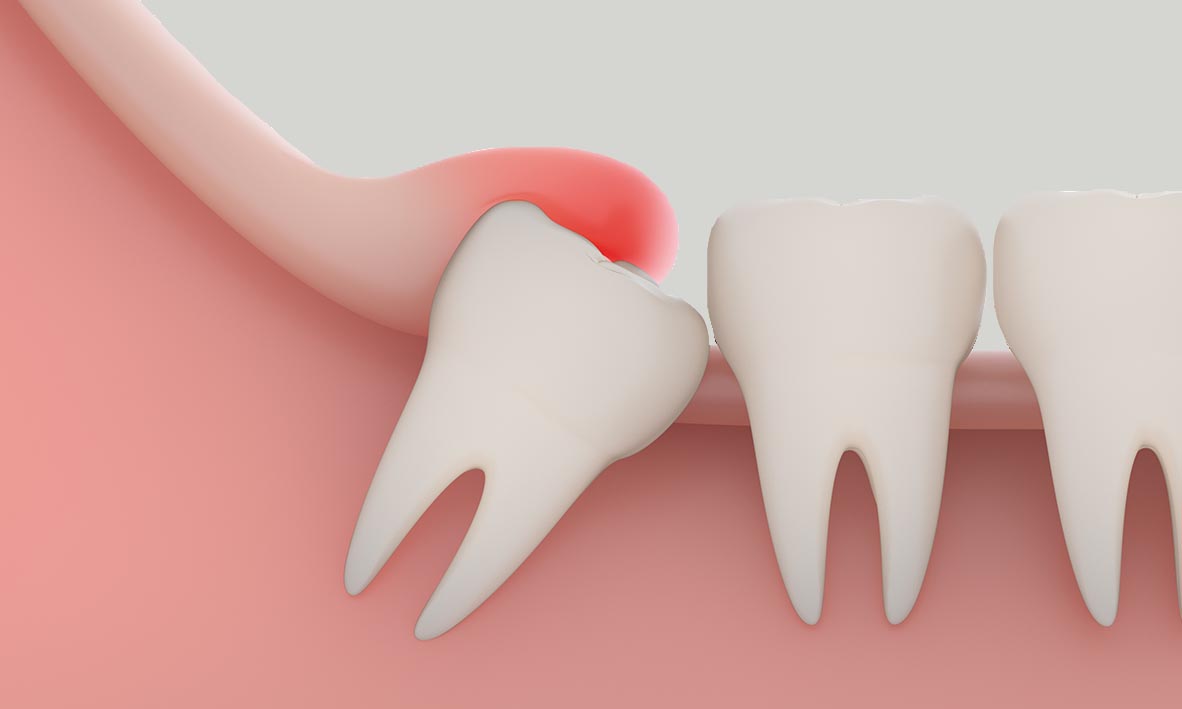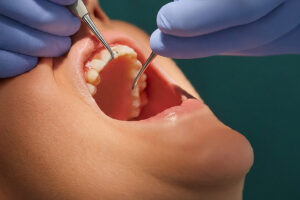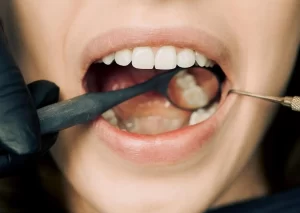How to Clean under Gum Flap Wisdom Tooth

In this comprehensive guide, we will explore effective and safe methods for cleaning under the gum flap of a wisdom tooth.
From the gentle use of soft-bristled toothbrushes and saltwater rinses to the strategic application of water flossers and antibacterial mouthwash, we will provide step-by-step instructions to help you maintain impeccable oral hygiene in this challenging area.
Table of Contents
What is a gum flap over the wisdom tooth
A gum flap over a wisdom tooth, often referred to as an operculum, occurs when a piece of gum tissue partially covers the crown of a tooth that has not fully erupted into its proper position in the mouth.
This is most commonly seen with wisdom teeth, also known as third molars, which are the last set of teeth to develop and erupt, usually appearing in late adolescence or early adulthood.
Step-by-step guide: how to clean under gum flap wisdom tooth
Cleaning under the gum flap around a wisdom tooth, also known as a pericoronal flap, is important for preventing infection, pain, and other dental issues like pericoronitis. However, it’s a delicate area and requires careful handling. Here are general guidelines on how to clean under the gum flap of a wisdom tooth:
Use a Soft-Bristled Toothbrush
Opt for a soft-bristled toothbrush to gently clean the area around the wisdom tooth. Be careful not to press too hard to avoid injuring the gum flap.
Salt Water Rinses
Saltwater has natural disinfectant properties. Mix a teaspoon of salt in a cup of warm water and gently swish it around your mouth for 30 seconds, focusing on the wisdom tooth area. Do this 2-3 times a day, especially after meals, to help reduce swelling and prevent infection.
Water Flosser
A water flosser can be a gentle and effective way to clean under the gum flap. Use it on a low setting to avoid causing pain or damage. The water stream can help dislodge food particles and bacteria from under the gum flap.
Antibacterial Mouthwash
Use an antibacterial mouthwash to help reduce bacteria under the gum flap. Choose a non-alcoholic mouthwash to avoid irritation. Rinse as directed on the product label.
Dental Floss and Interdental Brushes
Carefully use dental floss or an interdental brush to remove food particles between teeth near the wisdom tooth. Be gentle to avoid poking or damaging the gum flap.
Regular Dental Check-ups
Regular visits to the dentist are crucial for monitoring the health of your wisdom teeth and the surrounding gums. A dentist or dental hygienist can provide professional cleaning and advice tailored to your situation.
Professional Cleaning
If the area is particularly difficult to clean or if you’re experiencing symptoms of infection (like pain, swelling, or bad taste), see a dentist.
They can professionally clean the area, possibly using special tools to gently lift the gum flap and remove debris.
Precautions:
- Be Gentle: The area around a wisdom tooth can be sensitive and prone to injury.
- Watch for Signs of Infection: If you experience significant pain, swelling, or other signs of infection, contact your dentist immediately.
- Consult Your Dentist: Before attempting to clean under the gum flap, especially if you have concerns or existing dental issues, consult with your dentist for personalized advice.
FAQ
Do wisdom teeth gum flaps go away?
Yes, wisdom teeth gum flaps, or pericoronal flaps, can go away over time, especially as the wisdom teeth continue to erupt and emerge fully into their correct position in the mouth. If the tooth erupts fully and aligns properly with the other teeth, the gum tissue can adjust, eliminating the flap.
In cases where the wisdom tooth is impacted or partially erupted, the gum flap may not resolve on its own and could lead to recurring issues, such as infection or inflammation.
In some situations, a dentist or oral surgeon might recommend a procedure called an operculectomy to remove the gum flap, or even extraction of the wisdom tooth if it poses ongoing problems or if there isn’t enough space for it to properly emerge.
Regular dental check-ups are important to monitor the development of wisdom teeth and to decide on the best course of action.
How do you get food out of wisdom teeth gum flaps?
To safely remove food from under wisdom teeth gum flaps, follow these steps:
– Rinse with Salt Water: Mix a teaspoon of salt in a cup of warm water and gently swish it around your mouth for 30 seconds. This can help dislodge food particles and reduce inflammation.
– Use a Water Flosser: A water flosser can be very effective for cleaning hard-to-reach areas, including under gum flaps. Use it on a gentle setting to avoid causing irritation.
– Soft-Bristled Toothbrush: Gently brush around the area with a soft-bristled toothbrush. Be careful not to poke directly under the gum flap to avoid irritation.
– Dental Floss: Carefully use dental floss to remove food particles between teeth near the wisdom tooth. Avoid forcing the floss under the gum flap.
– Interdental Brushes: These can be used to gently remove debris from around the wisdom tooth, but be cautious not to push them under the gum flap forcefully.
– Antibacterial Mouthwash: Rinsing with an antibacterial mouthwash can help dislodge trapped food particles and reduce bacteria around the wisdom tooth.
How do you remove gum flaps at home?
Removing gum flaps at home is not recommended due to the risk of infection and damage to the surrounding tissues. Gum flap removal, especially around wisdom teeth, requires professional dental or surgical intervention.
If a gum flap is causing discomfort or hygiene issues, consult a dentist or oral surgeon for evaluation and safe, appropriate treatment. They can perform procedures like an operculectomy under sterile conditions to remove the flap if necessary.
What are some home remedies to alleviate pain after cleaning under a gum flap wisdom tooth?
To alleviate pain after cleaning under a gum flap around a wisdom tooth, consider these home remedies: Rinse with warm salt water to reduce inflammation and kill bacteria. Apply a cold compress outside the cheek to ease swelling and numb the area. Use clove oil, a natural analgesic, by applying a small amount directly to the gum or soaking a cotton ball and placing it against the affected area. Over-the-counter pain relievers like Ibuprofen can help manage discomfort. Always follow the product’s instructions and consult with a dentist if pain persists.
How often should I clean under my gum flap wisdom tooth?
You should clean under the gum flap around your wisdom tooth at least twice a day, as part of your regular oral hygiene routine. After meals, rinsing with salt water can help dislodge food particles and bacteria, reducing the risk of infection. If you have specific concerns or a history of pericoronitis, consult your dentist for personalized advice.
Is bleeding normal when cleaning under a gum flap wisdom tooth?
Yes, some bleeding is normal when cleaning under a gum flap over wisdom tooth around a wisdom tooth, especially if the area is inflamed or if you’re just beginning to clean more thoroughly. The gums in this area can be sensitive and prone to bleeding due to the accumulation of bacteria and debris. If the bleeding is heavy, persistent, or accompanied by significant pain and swelling, consult a dentist. These could be signs of infection or other dental issues that require professional attention.
Fact Checked
Our dedicated team rigorously evaluates every article and guide to ensure the information is factual, up-to-date, and free of bias.
Updated Regularly
We update our articles and reviews regularly to ensure you have access to the latest data in the dental industry.
The content on Dental3DU’s blog is intended for educational purposes only. This information should not be relied upon as professional medical counsel. Be sure to always consult with your dentist about the dangers and benefits of any medication, treatment or procedure.







